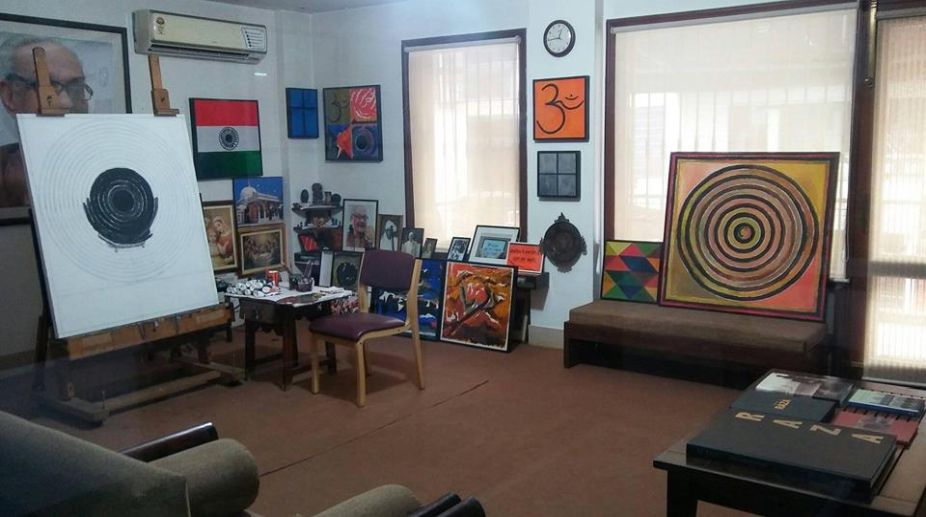Spirituality, power and energy in Bindu Series by SH Raza
Raza was deeply influenced by the rich vibrancy and multiplicity of colorfulness of Indian life and nature. In all his paintings in the series, the lines were not straight.

(Photo: Facebook)
A glance at his paintings is all it takes to identify the defining element of "Bindu" that has become synonymous with Sayed Haidar Raza's work.
Housed in the last studio Raza occupied, these paintings have been preserved and many of his works are in the process of getting digitally archived. On his first death anniversary on 23 July, Raza Foundation held a week-long workshop for students of Fine Arts from different parts of Madhya Pradesh. Founded in 2001 by Raza, the Foundation is aimed at promoting visual arts, poetry, music and other art forms.
This initiative is a part of the artistic activities in Mandla, Raza’s village, to commemorate his association with the place. The eminent Indian painter is venerated for his thoughtful art. Former chairman of Lalit Kala Akademi and poet Ashok Vajpeyi proudly spoke of the last studio used by Raza, with his unfinished painting and colours still untouched even a year after his death.
Advertisement
He shared, "He was a master colourist. The quivering of his hand while painting was incredible. He would not block out the whiteness completely, as if to remind the painting that it is on a canvas."
Initial years
It was in the small village of Mandla in Madhya Pradesh, where Raza was born in 1922. His initial years bore a deep influence on his work. Raza also harboured a deep reverence for the river Narmada, which meanders around Mandla. The central element of "Bindu" recurred in many of his paintings. He was intrigued by it when his school teacher made him concentrate on a black dot.
According to Raza, a latent energy awakened in him, then. The legendary artist made it a point to visit Mandla whenever he visited India. Raza, now lies buried next to his father in Mandla. For a creative mind, nothing is better than strong links with nature, believes Vajpeyi, as it helps sustain their innovativeness. Raza believed in multiple faiths and was also fluently trilingual.
He was awarded the Padma Shri in 1981, the Padma Bhushan in 2007 and the Padma Vibhushan in 2013. He travelled extensively through Europe, and settled in Paris for five decades, where he met his second wife, Janine Mongillat.
Helping hand
One of the highest-selling painters of India, he was known for his generosity towards other artists, helping them establish themselves through provision of showcasing opportunities and grants. He also did joint exhibitions with young artists like Sujata Bajaj, Akhilesh, Seema Ghuraiya and Manish Pushkale.
The Foundation, headquartered in Delhi, houses the letters exchanged between Raza and his progressive contemporaries. Many of these have taken the form of books.
Vajpeyi also spoke of his fascination with old French furniture. Some furniture was brought back from his French mansion to the Raza Foundation, where he lived for more than five years before he died in July 2016. The legacy of generosity and promotion of art forms is carried forward by the Raza Foundation.
This is primarily done through fellowships, awards, and grants for books, artworks and cinema. The Foundation also undertakes discussions on issues of importance in the society
Advertisement